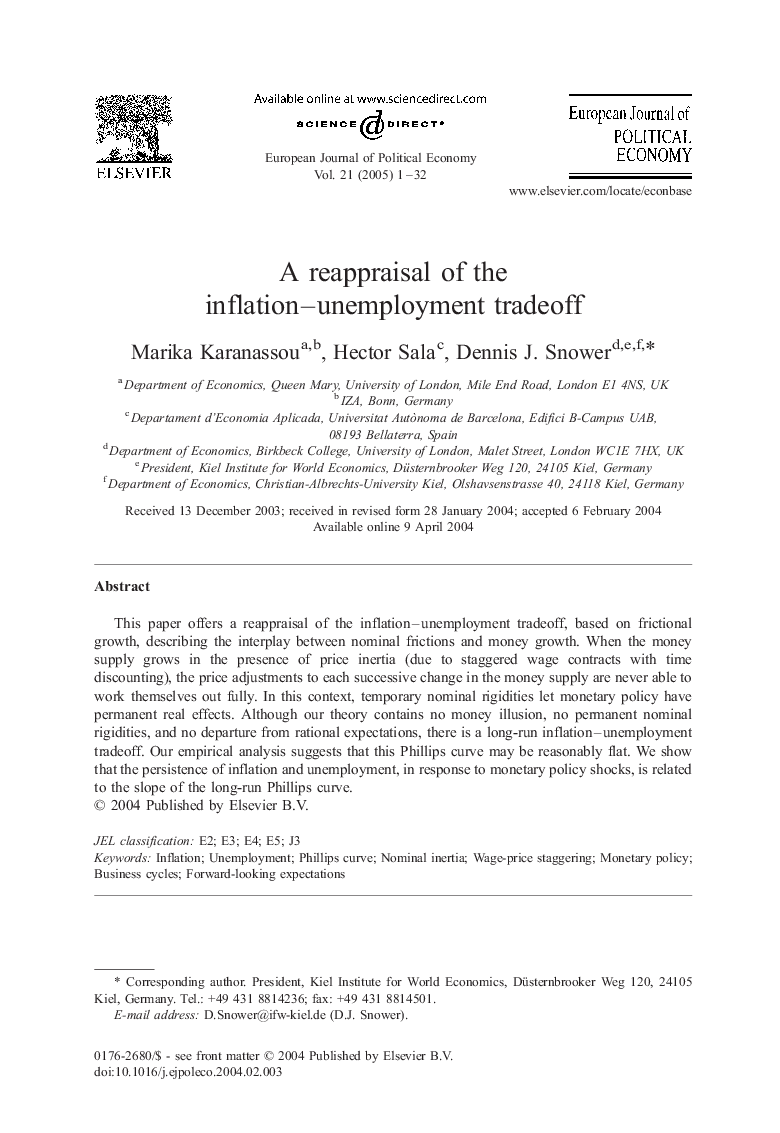| Article ID | Journal | Published Year | Pages | File Type |
|---|---|---|---|---|
| 9724200 | European Journal of Political Economy | 2005 | 32 Pages |
Abstract
This paper offers a reappraisal of the inflation-unemployment tradeoff, based on frictional growth, describing the interplay between nominal frictions and money growth. When the money supply grows in the presence of price inertia (due to staggered wage contracts with time discounting), the price adjustments to each successive change in the money supply are never able to work themselves out fully. In this context, temporary nominal rigidities let monetary policy have permanent real effects. Although our theory contains no money illusion, no permanent nominal rigidities, and no departure from rational expectations, there is a long-run inflation-unemployment tradeoff. Our empirical analysis suggests that this Phillips curve may be reasonably flat. We show that the persistence of inflation and unemployment, in response to monetary policy shocks, is related to the slope of the long-run Phillips curve.
Keywords
Related Topics
Social Sciences and Humanities
Economics, Econometrics and Finance
Economics and Econometrics
Authors
Marika Karanassou, Hector Sala, Dennis J. Snower,
